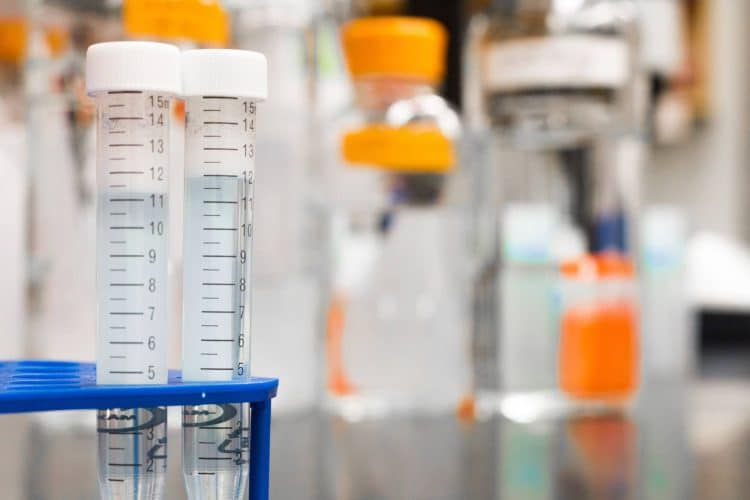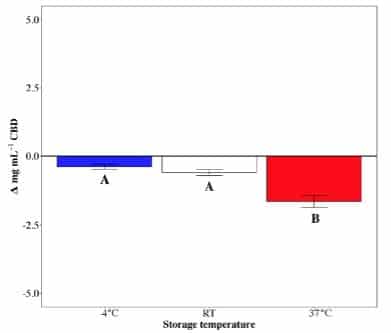Cannabidiol (CBD) has been associated with mislabeled products for years. Many of us are familiar with the 2017 report from the Journal of the American Medical Association that analyzed 84 CBD products from 31 companies; to recap, only 26 of the 84 products were labeled accurately. [1] A new study published in Scientific Reports confirms—with a novel method of measurement—that mislabeling still happens. [1] Not only that, but CBD product shelf stability may be inadequate.
The researchers investigated 13 CBD e-liquids (for vaporizers) sold commercially online. They used high performance liquid chromatography (HPLC), namely an Agilent 1200 RRLC system) with a Synergi C-18 column. They set the equipped autosampler at 4° C to analyze CBD content. Using five ethanol-CBD dilutions (tested in triplicate) for the calibration curve, they achieved a coefficient of determination of 0.995. The researchers determined a limit of detection of 1.70 µg/ml and a limit of quantitation of 5.00 μg/mL.
The CBD labeling discrepancies across samples were reported as follows (as percent differences compared to label, %):
- Seven Wonders CBD 400 by VaporArt: 13.1 ± 1
- Seven Wonders CBD 200 by VaporArt: -11 ± 3
- CBD 200 sativa Mr Kush by CBD Crystal: 9 ± 3
- Ambrosia by Enecta: 14 ± 1
- Mango Kush by KanaLife: −10 ± 1
- Pure Base by Harmony: 17 ± 2
- CBD liquid 1% by C-juice: −92 ± 1
- CBD liquid 2.5% by C-juice: −91 ± 1
- CBD liquid 5% by C-juice: −92 ± 1
- CBD liquid 10% by C-juice: −92 ± 1
- CBD Pure 250 by TNT Vape: −6 ± 5
- CBD 2% by Pure: 4 ± 1
- CBD sativa Blend by Sensi Seed: 3 ± 3
With allowance of ±10% variance, about 38% of the samples passed the label test. Others were either over or under the stated label claim for CBD.
The researchers then moved on to the more novel phase of the experiment—product shelf stability. They tested photostability—stability against light—by exposing 1 mL of each e-liquid to natural daylight against a dark control (using aluminum foil) for 30 days. Statistical analysis revealed an average 15% reduction of CBD in the samples exposed to light.
The thermal test involved three storage conditions: 4° C, room temperature (RT), and 37° C, again for 30 days. The warm condition led to average CBD losses up to 20%. Interestingly, a few of the products (#12 and #13) resisted significant degradation from temperature.
Significant loss of CBD at 37° C storage condition.
Source: Mazzetti et al [1], Open Source: CC 4.0 International
The researchers concluded with the ever-familiar call to “regulate and control this market…to protect customers and their health.” They also pointed out that storage conditions affect the product significantly, and packaging should provide these details.
References
- Bonn-Miller, Marcel O., et al. “Labeling Accuracy of Cannabidiol Extracts Sold Online.” JAMA, vol. 318, no. 17, Nov. 2017, pp. 1708–09, doi:10.1001/jama.2017.11909. Journal Impact Factor: 273; Times Cited: 91
- Mazzetti, Carlo, et al. “Quantification of the Content of Cannabinol in Commercially Available e-Liquids and Studies on their Thermal and Photo-Stability.” Scientific Reports, vol.10, no.3697, 2020. Journal Impact Factor: 122.













